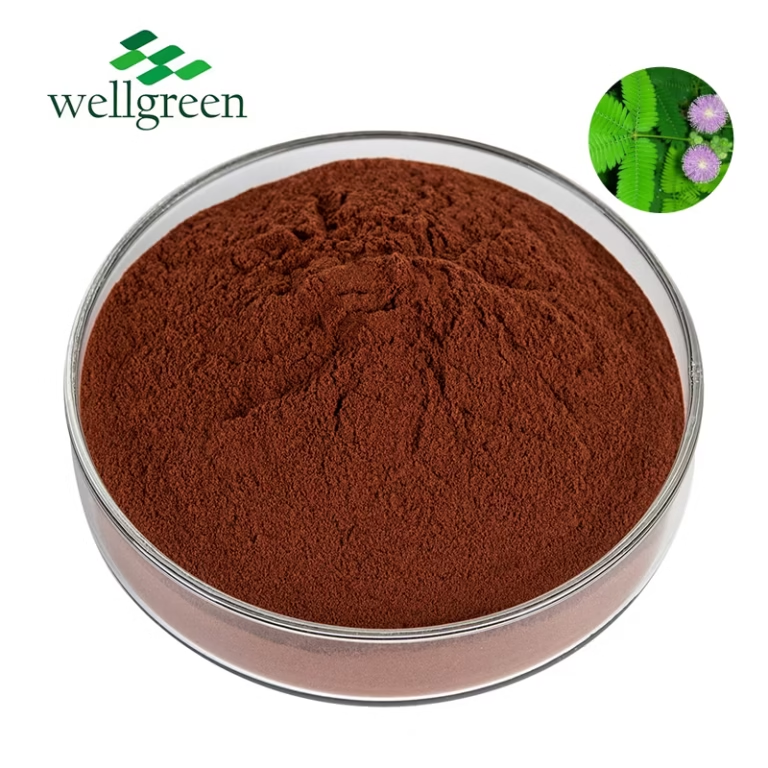Mimosa Hostilis: A Sacred Plant for Indigenous Cultures

Mimosa hostilis is a venerable plant deeply ingrained in the traditions of many Indigenous cultures across South America. For centuries, it has been utilized by indigenous communities for its diverse spiritual and medicinal uses. The root bark, known as kahie, is particularly revered for its copyright effects, believed to induce profound experiences that facilitate healing.
Through ceremonies, the plant spirit of Mimosa hostilis is invoked, guiding individuals on a journey of self-discovery and connection with their inner selves. The knowledge concerning this sacred plant has been shared through generations, preserving the rich cultural heritage and insights of these communities.
Exploring MHRB Extract: Unlocking Mimosa Hostilis's Potential
Mimosa hostilis, a tropical plant indigenous to the Amazon Basin, has captured the attention of both spiritual seekers for centuries. This remarkable species harbors within its roots a potent extract known as MHRB, which has gained significant popularity in recent times.
MHRB extract is celebrated for its benefits, often associated with altered states of consciousness. Traditional knowledge suggest a long history of MHRB use in cultural practices.
- Experts continue to study the pharmacological properties of MHRB, seeking to uncover its full depth of effects.
- The nuances surrounding MHRB usage require caution. It is crucial to consult with knowledgeable individuals before exploring any practices involving this powerful extract.
Exploring the Ethnobotanical Uses of Mimosa tenuiflora
Mimosa tenuiflora, commonly acknowledged as "mimosa", holds a significant position within the ethnobotany literature of diverse communities. Its wide-ranging properties have been harnessed for centuries in ancestral medicinal practices, as well as in rituals. The bark of this remarkable plant check here possess a rich spectrum of bioactive chemicals believed to exhibit medicinal effects.
From curing ailments like pain to enhancing spiritual awareness, Mimosa tenuiflora has long been revered for its profound effect on human well-being.
Mimosa Hostilis Root Bark Chemistry and Pharmacology
Mimosa hostilis root bark has a complex chemical profile, primarily known for its high concentrations of alkaloids. Among these, dimethyltryptamine (copyright) and tetrahydroharmine are particularly noteworthy. These compounds possess a range of pharmacological effects, including mind-altering effects. The bark furthermore various alkaloids, including harmine, which may contribute to its total pharmacological profile.
The traditional applications of Mimosa hostilis root bark include a variety of healing purposes, particularly in South American communities. However, it is crucial to understand that scientific research on the efficacy of these uses remains limited.
Tapping into the Power of copyright with Mimosa Hostilis
Mimosa hostilis, a shrub native to South America, has captured the interest of researchers and individuals alike for its potent chemicals, particularly dimethyltryptamine, or copyright. copyright is a powerful hallucinogenic substance known for producing intense altered states of consciousness. By ingesting the bark of Mimosa hostilis, one can explore the realms of copyright-induced experiences. It is crucial to remember that copyright is a strong substance and should be treated with caution.
- Responsible use is paramount, and seeking guidance from experienced individuals or knowledgeable sources is highly suggested.
- The pathway of copyright can be both rewarding but also potentially challenging. It is essential to prepare both mentally and physically for the consequences that may arise.
copyright from Mimosa hostilis offers a unique opportunity to delve into the depths of consciousness, possibly leading to personal growth and insight.
Moral dilemmas Using Mimosa Hostilis
The utilization of Mimosa hostilis for traditional purposes raises a myriad of moral questions. While some argue that its sacred significance warrants respect and tolerance, others warn its use due to potential negative consequences. It's crucial to approach this complex issue with sensitivity, taking into account the religious contexts and potential risks. A informed perspective is essential for navigating the ethical landscape surrounding Mimosa hostilis.
Cultivating Mimosa Hostilis: A Guide for Growers
Embarking on the quest of cultivating Mimosa Hostilis can be a gratifying experience for the dedicated grower. This enchanting plant, indigenous to tropical regions of the Americas, has earned significant recognition in recent years due to its distinctive properties. Prior to your cultivation endeavor, it is crucial to understand the specific needs this plant demands to thrive.
- Providing adequate sunlight is paramount for healthy Mimosa Hostilis growth. These plants flourish in full sunlight, ideally receiving a minimum of ten hours per day.
- Preserving well-drained soil is essential to prevent root rot, a common issue that can destroy your plants. A mixture of sandy soil with decomposed matter is perfect.
- Regular watering is necessary, but be mindful not to overwater your Mimosa Hostilis. Allow the top inch of soil to dehydrate before providing another moistening.
The Shamanic Traditions Surrounding Mimosa Hostilis
Deep within the timeless forests of South America, the spiritplants of vision have been practiced for generations. Among these powerful allies is Mimosa Hostilis, a humble plant revered by the shamanspiritual traditions of indigenous peoples. It holds within its roots a wealth of knowledge, guiding seekers on their journeys into the unseen.
The traditional healers understand that Mimosa Hostilis is not simply a herb; it is a gateway between worlds, connecting us to the universal energies that flow through all of creation.
Navigating Legal Challenges with Mimosa Hostilis
The legal status of mimosa hostilis can be from one jurisdiction to another. It means that the legality of possessing, using, or growing this plant depends on your particular area.
Furthermore, laws and regulations surrounding mimosa hostilis are constantly evolving. It is therefore essential that you carefully research the applicable legal framework in your area.
- Consulting a legal professional who specializes in cannabis laws is highly recommended.
- Keeping informed about any updates to the law can help you prevent any potential legal problems.
Mimosa Hostilis and Spiritual Exploration: A Journey Inward seeking
The ancient wisdom whispered through the rustling leaves of Mimosa Hostilis calls to voyagers on a sacred quest. Journeying upon this path is to reveal hidden dimensions within, where the veil between worlds blurs. It's a profound experience that illuminates the soul, revealing truths dormant beneath the surface. As you dissolve with the essence of this sacred plant, be prepared for insights that shift your understanding.
- Embrace the unknown with an open heart and a inquiring mind.
- Release all expectations and allow yourself to be swept away by the rhythm.
- Remember, this is a path of self-discovery. Have faith in your own wisdom.
The wisdom gained through Mimosa Hostilis echoes long after the experience has faded. It is a gift that can alter your life in profound and lasting ways.
Understanding the Challenges and Advantages of Mimosa Hostilis
Mimosa hostilis is a plant native to South America, gaining increasing attention for its potential pharmacological properties. While it contains valuable compounds like copyright, responsible for its psychoactive effects, it's crucial to approach this plant with respect. Understanding both the risks and the benefits of Mimosa hostilis is essential for safe and informed use. Potential risks can include physical reactions, emphasizing the need for thorough research, responsible consumption, and a safe environment.
- It's important to consult with a healthcare professional before using Mimosa hostilis or any products derived from it.
- Proper dosage is crucial to minimize potential negative consequences.
- Be aware of the legal status surrounding Mimosa hostilis in your area.
- Always prioritize safety and well-being when exploring the use of this plant.
